-
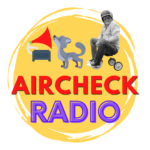 play_arrow
play_arrow
AircheckRadio Aircheck Radio
-
 play_arrow
play_arrow
Quid pro bros Vox
-
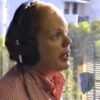 play_arrow
play_arrow
Miami-Fort Lauderdale Barry Wright
KROY Radio: Sacramento’s Top 40 Station of the 1960s and 1970s
KROY Radio (1240 AM) is one of Sacramento, California’s two most popular Top 40 radio stations of the 1960s and 1970s. Its selection of high-energy sound recordings, popular disc jockeys, and effective promotions earned the station an important place in the city’s cultural and musical history during its heyday in the area. This article is a retrospective review of the KROY Radio station, including its history and profiles of people, as well as the Sacramento radio market and competition. The article also reviews the station’s promotions and the community’s recollections of the radio station and its impact.
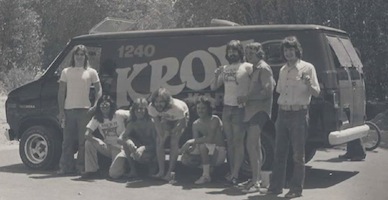
KROY Radio made its first broadcast on March 15, 1937, making it Sacramento’s second-oldest operating radio station after KFBK (1530 AM), which traces its radio license history back to a 1922 radio predecessor. Station founder and owner Royal Miller changed the station’s call letters to KROY in its early years, and the station was also affiliated with the Columbia Broadcasting System (CBS) in January 1938. KROY began moving to a Top 40 radio format in the late 1950s and, by the fall of 1968, was the most popular radio station in the Sacramento market and would continue to hold the top spot until the mid-1970s. The Top 40 radio format is defined by hit music emphasis, tight playlists, fast-paced programming, and showman-on-air personalities that appeal to teens and young adults. This radio format took its inspiration from rock ‘n’ roll and pop music, which was peaking in popularity during the 1960s.
KROY’s peak period as Sacramento’s top-rated Top 40 radio station was in the 1960s and the early 1970s, before suffering some audience loss due to the efforts of competitors, market shifts, and format changes. The station provided a springboard for well-known disc jockeys such as Robert W. Morgan, Gary Owens, Don MacKinnon, and Johnny Hyde, who all went on to find national or other-market fame after working for KROY Radio. KROY’s popular playlists during its run as the top-rated Top 40 station included The Beatles, The Rolling Stones, Elton John, ABBA, David Bowie, The Bee Gees, Eagles, Chicago, Santana, Alice Cooper, Creedence Clearwater Revival, and Jimi Hendrix, among others.
Sacramento Radio Market and Competition
The Sacramento radio market in the 1960s and 1970s was well-developed and competitive. KROY’s direct competitor for Sacramento’s Top 40 radio format share of the audience was with KXOA, another AM station. KXOA was owned by a different company and carried a high-energy Top 40 format, so it was a natural rival for KROY for the same market share and audience. KXOA in fact shared its audience directly with KROY Radio and other AM radio competitors, including news/talk-formatted KFBK and rock-formatted KZAP (106.5 FM). The latter station began using a freeform rock format in 1968. Other KROY competitors that have been added to the mix since then are AM rock and classic rock rivals KRXQ (98 Rock) and KSEG (The Eagle), which were added to the mix in the 1980s. The Sacramento market is not limited to a single geography, with a cross-section of urban, suburban, and rural listeners.
Key People and Their Roles at KROY Radio
The success and reach of KROY Radio can be attributed to the people who worked on the station, contributed to it, and became important to the station’s programming. The station is where nationally syndicated disc jockeys Owens, Morgan, MacKinnon, and Hyde got their start during the era, especially in the top-rated years from 1968 to the late 1970s. The program directors and station managers were also important cogs in the KROY Radio success machine during this era.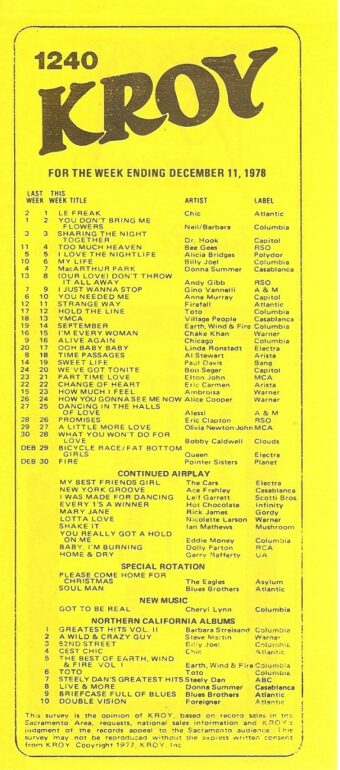
Gary Owens was a personality for KROY Radio in the early 1960s before moving on to national success in other markets as the announcer on the “Rowan & Martin’s Laugh-In” TV show. Owens’s style on KROY was different, and he has been described as a serious announcer before that change. Owens also talked about his own sense of humor with humorous and sarcastic rants, jokes, sound effects, and parodies. Owens would eventually find national notoriety as the on-air announcer on Laugh-In, a popular comedy TV show that ran from 1968 to 1973.
Robert W. Morgan was another popular KROY Radio personality who also worked for KHJ in Los Angeles after KROY. Morgan is also referenced as a legendary radio personality and is known to have been popular with the Sacramento market. Morgan would eventually develop a distinct patter and style of humor at KHJ after leaving KROY, but he would continue to make reference to KROY in his radio banter for years after he left Sacramento.
Don MacKinnon and Johnny Hyde were also popular KROY personalities and were a part of the KROY morning drive DJ lineup in the 1960s. In fact, MacKinnon in particular was so important to KROY’s success that Owens cited him in the Sacramento Bee article and SacTV.com interview. Hyde is also interviewed in an online article by SacTV.com, where he talked about his experience on KROY Radio in the 1970s, his love for the community, and impact. He also can be seen and heard in an online radio montage with other Sacramento personalities and stations of the era. Rinky and Don Moore were well-known personalities active in the Sacramento market until Rinky retired in 2005.
Ownership, Management and Other Staff
As is evident from the history above, KROY has been sold a number of times over its history since its creation in the late 1930s. The station’s changes in ownership included Sacramento Broadcasters in 1962, Atlantic States Industries in 1968, Jonsson Broadcasting Corporation in 1978, and Commonwealth Broadcasting in 1985. KROY and KROY-FM were sold for $12 million in 1985 to the latter company, half to each station, which represented a considerable appreciation in the value of both stations in the period. KROY-FM briefly used KROY call letters before switching to KSMX-FM in 1986, at which time it also switched formats to a classical music programing. Jonsson was also heavily criticized by Sacramento Bee radio columnist Dick Tracy for a lack of attention to the AM station and this is widely credited as contributing to the loss of the station’s audience in the 1980s. KEZS (96.9 FM) was purchased by KROY in 1975, with a brief change of call letters to KROI during the short term before KROY restored KEZS to its original call letters and beautiful music format. KEZS then changed formats and became KROY-FM in 1979.
Promotions and Listener Engagement
KROY was known for its high-energy sound recordings, hit-focused radio programming, and popular promotions, many of which involved Sacramento musicians. KROY served as Sacramento’s go-to source for rock ‘n’ roll and pop music for the era, and some of the most popular concert acts promoted by the station to the community included The Beach Boys, The Supremes, Sly & The Family Stone, Creedence Clearwater Revival, and The Righteous Brothers.
Music was sometimes the promotion itself, as giveaways, contests, and advertising for other musical events were frequently aired. KROY would also sponsor community concerts and other events at various venues and public places. For example, during the early 1960s Sacramento stores and movie theaters sponsored 15-minute-long concerts with artists who could tour or were based in Northern California. Many of the hit bands from the era were also Northern California bands, with Creedence Clearwater Revival being a frequently cited and headlining example.
The station would often co-sponsor events with local businesses, and tickets were also given away at Sacramento venues such as the Tower Theatre, minor league baseball games, the California State Fair, and other community events. Owens and MacKinnon can be seen and heard in an online video, and Owens is referenced in an article talking about their experiences and audiences in Sacramento. Owens talks about how many Sacramento residents who are still alive still have memories of the music and on-air personalities during the era, indicating the positive impact the station had in the market.
Public’s Recollections and Comments
Members of the public still talk about and remember KROY. This is especially true of Sacramento residents who grew up in the 1960s and 1970s. Owens is interviewed by SacTV.com, and he is candid about making community connections with music at KROY. Owens also talks about some of his own experiences and favorites while at KROY, and MacKinnon talks about some of his own stories and memories. Owens and MacKinnon can also be seen in a slideshow-type montage type video about Sacramento radio stations and personalities from the era. Owens is also featured and talks about his KROY experience and memories with Sacramento radio columnist Dick Tracy. Owens can also be seen in a Sacramento Bee photograph about radio from this era.
Owens specifically references Don MacKinnon as an important person in Sacramento at the time, and other personalities mentioned in the video and articles include Johnny Hyde and Morgan. Owens is candid about his KROY experiences in both his various interviews and in online discussions with the Sacramento Bee. Owens also references KROY on-air personality Don MacKinnon in a blog post that Owens wrote about his experience at KROY and the music he and the station played in the early 1960s. Owens talks about the music on KROY as a kind of precursor to MTV for the Sacramento market and was lucky to be there during this great popular music era in California.
Challenges and Format Changes
KROY had been Sacramento’s dominant Top 40 radio station for many years, but this dominance was successfully challenged, especially from the late 1970s as its competitors eroded its audience share. The competition included FM stations such as KZAP and KRXQ, which had better radio signals and more music formats that appealed to part of KROY’s Top 40 and rock audience. KROY began programming an adult rock format in January 1981 and targeted a wider baby boomer audience. Its popularity ratings began to decline precipitously from the top-rated position after the format changes. In 1982, KROY swapped its call letters with the FM station, so the AM station became KENZ and the FM station became KROY-FM (later also known as KSMX-FM). The FM format was switched to a contemporary hit radio format.
KROY Radio was and continues to be an important institution in Sacramento history and culture. The radio station helped to define the city’s soundscape for generations of Sacramentans and still has an impact on the city’s vibrant music scene today. KROY’s success is a testament to the importance and power of radio as an institution and medium and continues to be an important part of Sacramento residents’ lives.
KROY Radio was Sacramento’s top-rated radio station between the late 1950s and the mid-1970s. The most successful and top-rated years were in the 1960s and the early 1970s. Owens and MacKinnon are two of the most important people in this respect and the station is most fondly remembered for a number of its memorable promotions and events. Owens talks about how many Sacramento residents still remember KROY, the music, and the personalities in an article for the Sacramento Bee and an online interview for SacTV.com.
KROY’s most successful period was as a Top 40 station with rock and pop music format and artists such as The Beatles, Elton John, ABBA, David Bowie, and The Bee Gees. Owens also talked about music genres of the era in the SacTV.com interview. Owens reminisces about it being an enjoyable time to be in Sacramento radio because the music being played was so great. Owens also references his and MacKinnon’s local on-air personalities and antics as reasons the Sacramento community remembers the music and shows the two played at KROY during their time there. Owens and MacKinnon were popular for their on-air personalities and comedic timing. Owens was part of a brief KROY Radio history, between the late 1950s and the mid-1970s, before the station began its precipitous decline, partially due to changes in radio in general. Owens also references KROY’s impact on Sacramento as positive and discusses the role of music on the station and the community connections that it created during the time in the SacTV.com interview.
KROY began to see significant challenges and changes from the late 1970s. The primary competition for the station was KXOA, which is a Sacramento AM station with a similar high-energy Top 40 format that vied for Sacramento radio market share with KROY. KROY and KXOA directly shared their audience and competed against each other for advertising dollars and market share in the Sacramento radio market. Other competitors for KROY’s audience share were local AM and FM stations like KFBK, which used a news and talk format, and KZAP, which adopted a freeform rock format in 1968. In the early 1980s, the station briefly switched to an adult rock format and changed its call letters to KENZ. The following year, it switched formats again to contemporary hit radio, though this and the call letter change did not seem to help KROY’s market share.
Written by: Barry Wright
Similar posts
Most Liked Airchecks
Events
Support Aircheck Radio
Copyright 2025 Aircheck Radio is a proud listener supported 501(c)(3) nonprofit organization

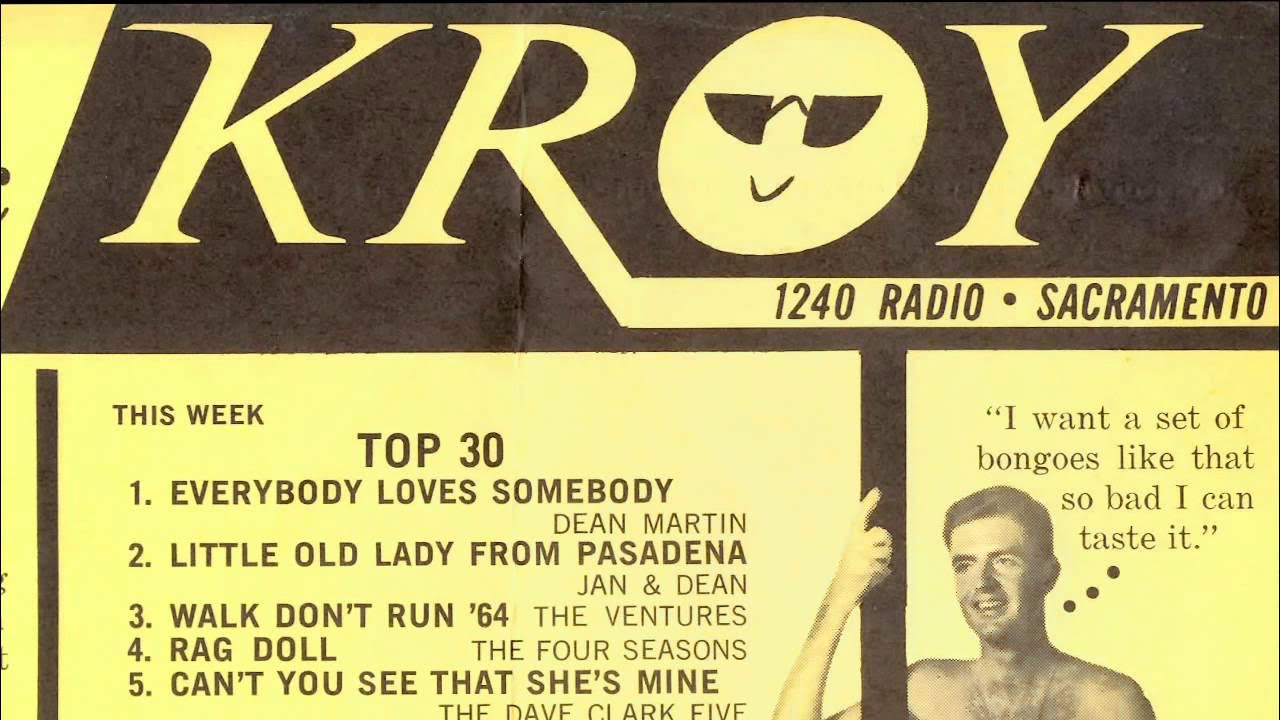
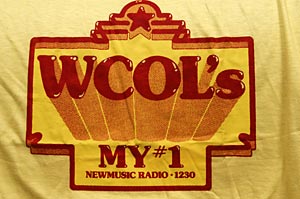
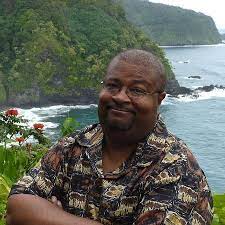

Post comments (0)